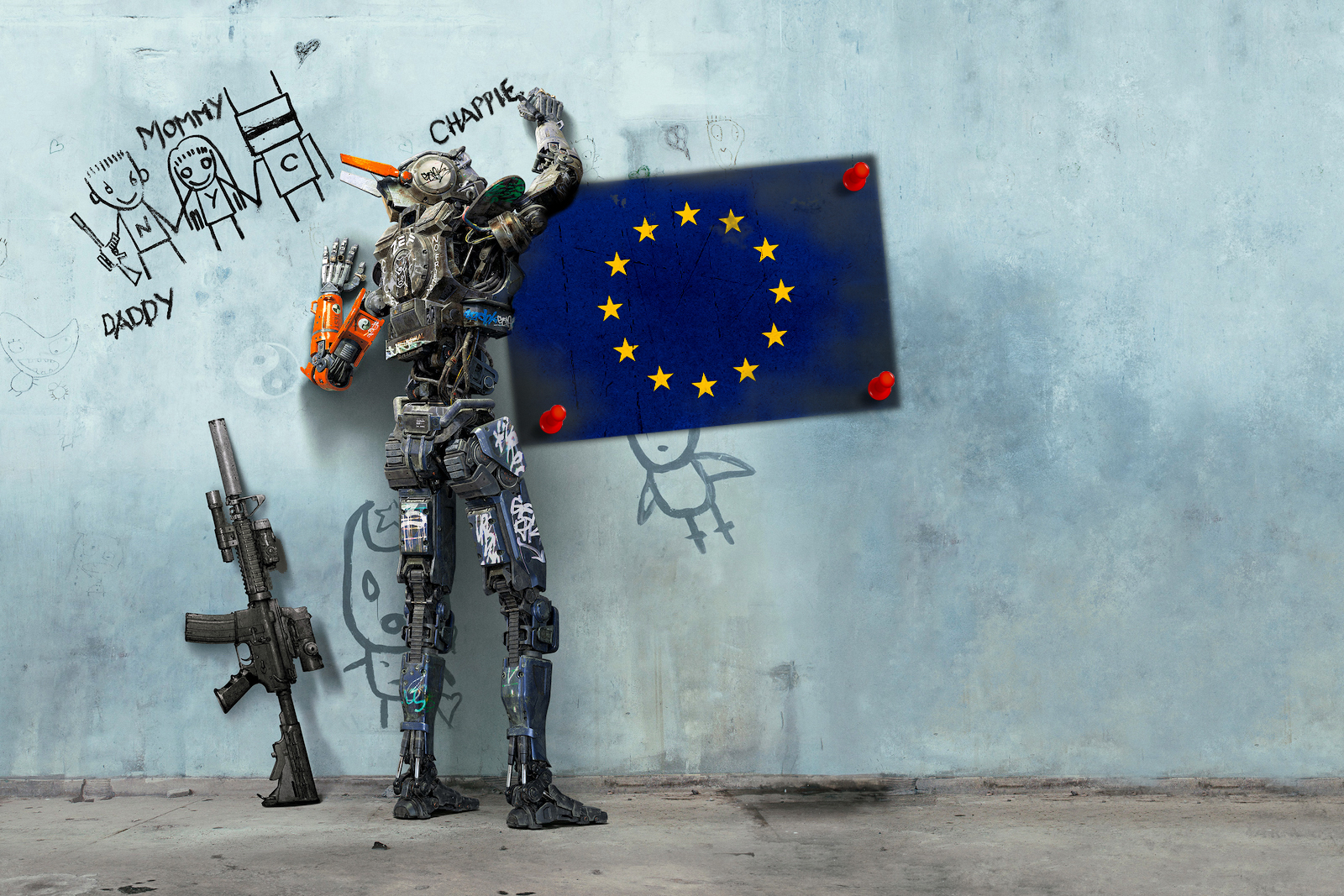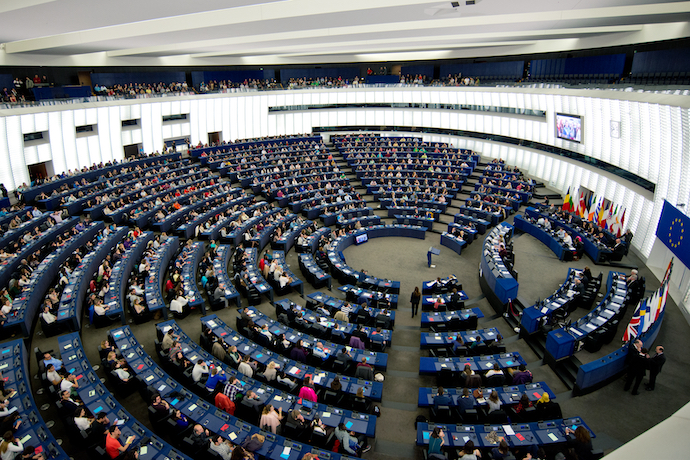
Tech
What the EU Gets Right with its New AI Rules
The European Union’s latest effort to rein in artificial intelligence, the AI Act, marks a pivotal step towards regulating a technology that is as pervasive as it is potent. With its public unveiling on January 21, the Act lays a framework that seeks to harness AI’s capabilities while safeguarding the fundamental tenets of trust, ethics, and human rights.
As we unpack the Act’s dimensions, we will weigh its merits against its potential impediments to the trajectory of AI, not just within the confines of Europe but as a precedent for the global stage. The discourse around this groundbreaking legislation is as much about its current form as it is about the dialogue it engenders concerning the future interplay of artificial intelligence with our societal mores and economic frameworks.
Does it strike the right balance?
The AI Act introduces a risk-based regulatory schema, categorizing AI systems into unacceptable, high-risk, limited-risk, and minimal-risk. The Act prohibits ‘unacceptable risk’ AI systems, such as manipulative social scoring and covert emotional manipulation, to protect individual rights. ‘High-risk’ AIs, pivotal in healthcare, education, and law enforcement, face rigorous requirements including human oversight. ‘Limited-risk’ AIs, like chatbots, must disclose their AI nature to users. Lastly, ‘minimal-risk’ AIs, like video games, have minimal regulatory constraints, promoting innovation while safeguarding against abuses.
The AI Act is crafted with the dual goals of fostering technological innovation and upholding fundamental rights. The Act’s targeted regulatory focus seeks to minimize undue burdens on AI practitioners by emphasizing the control of applications with the most potential for harm. However, it is not without its detractors. Critics point to its ostensibly broad and ambiguous language, which may leave too much open to interpretation, potentially leading to legal uncertainties.
The Act’s broad definition of AI as a technology-neutral concept, its reliance on subjective terminology like “significant” risk, and the discretionary power it affords to regulatory bodies are seen as potential stumbling blocks, raising concerns over possible inconsistencies and confusion for stakeholders within the EU’s digital marketplace.
A significant challenge the EU’s AI Act faces is ensuring consistent enforcement across all member states. To address this, the Act constructs an elaborate governance structure that includes the European Artificial Intelligence Board and national authorities, bolstered by bodies responsible for market surveillance. The Act stipulates robust penalties for non-compliance, including fines of up to 7% of global annual turnover. Beyond punitive measures, it emphasizes the role of self-regulation, expecting AI entities to undertake conformity assessments and maintain risk management protocols. The Act also recognizes the importance of global cooperation, considering the divergent AI regulatory landscapes outside the EU.
The efficacy of the Act will ultimately hinge on the collective engagement and adherence of all parties to its stipulated frameworks.
Some pros and cons of the AI Act
The AI Act directly addresses the burgeoning field of advanced technologies, focusing on generative AI, biometric identification, and the nascent realm of quantum computing. These technologies hold transformative potential across diverse sectors including healthcare, education, entertainment, security, and scientific research.
Yet, with great potential comes a spectrum of challenges, particularly concerning ethical issues like bias and discrimination, as well as concerns over privacy, security, and accountability. The Act confronts these challenges head-on by instituting rules and obligations tailored to specific AI categories. For instance, generative AI systems — which can create new, diverse outputs such as text, images, audio, or video from given inputs — must adhere to stringent transparency obligations. This is particularly pertinent as generative AIs like ChatGPT and DALL-E find broader applications in content creation, education, and other domains.
The Act acknowledges the potential for malicious use of generative AI, such as spreading disinformation, engaging in fraudulent activities, or launching cyberattacks. To counteract this, it mandates that any AI-generated or manipulated content must be identifiable as such, either through direct communication to the user or through built-in detectability. The goal is to ensure that users are not deceived by AI-generated content, maintaining a level of authenticity and trust in digital interactions.
Additionally, the Act requires AI systems that manipulate content to be designed in such a way that their outputs can be discerned as AI-generated by humans or other AI systems. This provision aims to preserve the integrity of information and preclude the erosion of factual standards in the digital age.
The AI Act is intentionally crafted to harmonize technological progress with the protection of foundational societal norms and values. The Act’s efficacy is predicated on the meticulous application of these regulations, keeping pace with the rapid development of AI technologies.
Turning to biometric identification systems, these tools are capable of recognizing individuals based on unique physical or behavioral traits such as facial features, fingerprints, voice, or even patterns of movement. While they offer enhancements in security, border management, and personalized access, they simultaneously raise substantial concerns for individual rights, including privacy and the presumption of innocence.
The Act specifically addresses the sensitive nature of biometric identification, incorporating stringent controls over its deployment. It notably restricts the use of real-time biometric identification systems in public areas for law enforcement, barring a few exceptions where the circumstances are critically compelling — such as locating a missing child, thwarting a terrorist threat, or tackling grave criminal activity.

In cases where biometric techniques are employed for law enforcement, the Act mandates prior approval from an independent authority, ensuring that any use is necessary, proportionate, and coupled with human review and protective measures. This regulatory stance underlines a commitment to uphold civil liberties even as we advance into an era of increasingly sophisticated digital surveillance tools.
Harnessed from the enigmatic realm of quantum physics, quantum computing emerges as a technological titan capable of calculations that dwarf the prowess of traditional computers. With the power to sift through vast data and unlock solutions to hitherto intractable problems, its potential spans the spectrum from cryptography to complex simulations, and from optimization to machine learning. Yet, this same capability ushers in novel risks: the crumbling of current cryptographic defenses, the birth of unforeseen security breaches, and the potential to tilt global power equilibria. The European Union’s AI Act, while not directly addressing quantum computing, encompasses AI systems powered by such quantum techniques within its regulatory embrace, mandating adherence to established rules based on the assessed risk and application context. Moreover, the Act presciently signals the need for persistent exploration and innovation in this sphere, advocating for the creation of encryption that can withstand the siege of quantum capabilities.
The Act’s influence on the vanguard of technology is paradoxical. It affords a measure of predictability and a compass for AI practitioners and end-users alike, weaving a safety net for the digital citizenry. Conversely, it may erect hurdles that temper the speed of AI progress and competitive edge, leaving a mist of ambiguity over the governance and stewardship of AI. The true measure of the Act’s imprint will reveal itself in the finesse of its enforcement, its interpretative flexibility, and its dance with the ever-evolving tempo of AI innovation.
Ethical considerations
The ethical tapestry of the AI Act is rich and intricate, advocating for an AI that is at once robust, ethical, and centered around human dignity, reflecting and magnifying the EU’s core values. It draws inspiration from the Ethics Guidelines for Trustworthy Artificial Intelligence, which delineate seven foundational requirements for the ethical deployment of AI, from ensuring human agency to nurturing environmental and societal flourishing. These principles are not merely aspirational; they are translated into tangible and binding mandates that shape the conduct of AI creators and users.
This ambitious ethical framework, however, does not come without its conundrums and concessions. It grapples with the dynamic interplay of competing interests and ideals: the equilibrium between AI’s boon and bane, the negotiation between stakeholder rights and obligations, the delicate dance between AI autonomy and human supervision, the reconciliation between market innovation and consumer protection, and the symphony of diverse AI cultures under a unifying regulatory baton. These quandaries do not lend themselves to straightforward resolutions; they demand nuanced and context-sensitive deliberations.
The ethical footprint of the Act will also depend on its reception within the AI community and the wider public sphere. Its legacy will be etched in the collective commitment to trust and responsibility across the AI ecosystem, involving developers, users, consumers, regulators, and policymakers. The vision is a Europe — and indeed, a world — where AI is synonymous with trustworthiness and accountability. This lofty goal transcends legal mandates, reaching into the realm of ethical conviction and societal engagement from every stakeholder.
In an era where artificial intelligence weaves through the fabric of society, the AI Act emerges as a pioneering and comprehensive legislative beacon, guiding AI towards a future that harmonizes technological prowess with human values.
The Act casts a wide net, touching on policy formulation, regulatory architecture, and the ethical lattice of AI applications across and beyond European borders. It stands as a testament to opportunity and foresight, yet it is not without its intricate tapestry of challenges and quandaries. The true measure of its influence lies not in its immediate enactment but in the organic adaptability and robust enforcement as the landscape of AI shifts and expands.
It’s crucial to articulate that this Act doesn’t represent the terminus of regulatory dialogue but inaugurates a protracted era of AI governance. It necessitates periodic refinement in lockstep with the march of innovation and the unveiling of new horizons and prospects. This legislative framework calls for a symphony of complementary endeavors: the investment in research, the enrichment of education, the deepening of public discourse, and the cultivation of global partnerships.
Embarking on this audacious path to an AI domain that is dependable, ethical, and human-centric is a collective venture. It demands a concerted commitment from all corners of the AI sphere — developers, users, policymakers, and citizens alike. It is an invitation to contribute to and bolster this trailblazing expedition into the domain of artificial intelligence — an odyssey that we all are integral to shaping.

